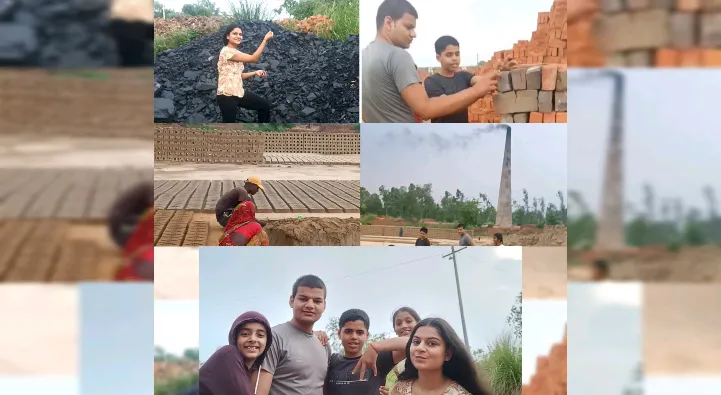The Adventure at the Brick Kiln!!
The Adventure at the Brick Kiln: A Journey of Discovery
Last summer, during the vibrant month of May, our family reunited in our ancestral village for my uncle’s wedding. It was a joyous occasion, bringing together cousins who hadn't seen each other for years. After days filled with dancing, laughter, and endless fun, the wedding festivities came to an end, leaving just a few of us behind: my brothers Abhay and Shan, our cousins Rudra and Shona, and our friend Pari.
One bright afternoon, as the sun blazed overhead, we found ourselves sitting under the shade of a sprawling banyan tree. Our lively group, always full of energy, decided to play antakshari and other games to pass the time. But soon, our adventurous spirits craved something more thrilling.
“Let’s explore the village!” suggested Abhay, his eyes sparkling with excitement. We all agreed eagerly, setting off with nothing but our phones and a sense of curiosity. shan was not interested in going with us as it was summer afternoon and he didn't show any interest in exploring in that hot weather!! but we all were ready and Our exploration led us through forests and near serene lakes, swinging on the banyan tree vines and enjoying the natural beauty around us.
Suddenly, we noticed a plume of black smoke rising in the sky. Intrigued and a bit concerned, we decided to follow it. The trail led us to a brick kiln on the outskirts of the village. From a distance, the kiln looked imposing, with large stacks and workers moving about like tiny ants.“Let’s check it out,” Rudra suggested, his curiosity piqued. Although we felt a mix of excitement and apprehension, we all agreed and approached the kiln.
As we stepped into the kiln area, we were immediately struck by the sight of laborers working tirelessly under the scorching sun. The ground was littered with unbaked bricks, while large piles of baked bricks awaited transport. We noticed a mountain of coal, the fuel for baking the bricks, adding to the intense heat of the place.
Driven by a mix of curiosity and concern, we decided...
Last summer, during the vibrant month of May, our family reunited in our ancestral village for my uncle’s wedding. It was a joyous occasion, bringing together cousins who hadn't seen each other for years. After days filled with dancing, laughter, and endless fun, the wedding festivities came to an end, leaving just a few of us behind: my brothers Abhay and Shan, our cousins Rudra and Shona, and our friend Pari.
One bright afternoon, as the sun blazed overhead, we found ourselves sitting under the shade of a sprawling banyan tree. Our lively group, always full of energy, decided to play antakshari and other games to pass the time. But soon, our adventurous spirits craved something more thrilling.
“Let’s explore the village!” suggested Abhay, his eyes sparkling with excitement. We all agreed eagerly, setting off with nothing but our phones and a sense of curiosity. shan was not interested in going with us as it was summer afternoon and he didn't show any interest in exploring in that hot weather!! but we all were ready and Our exploration led us through forests and near serene lakes, swinging on the banyan tree vines and enjoying the natural beauty around us.
Suddenly, we noticed a plume of black smoke rising in the sky. Intrigued and a bit concerned, we decided to follow it. The trail led us to a brick kiln on the outskirts of the village. From a distance, the kiln looked imposing, with large stacks and workers moving about like tiny ants.“Let’s check it out,” Rudra suggested, his curiosity piqued. Although we felt a mix of excitement and apprehension, we all agreed and approached the kiln.
As we stepped into the kiln area, we were immediately struck by the sight of laborers working tirelessly under the scorching sun. The ground was littered with unbaked bricks, while large piles of baked bricks awaited transport. We noticed a mountain of coal, the fuel for baking the bricks, adding to the intense heat of the place.
Driven by a mix of curiosity and concern, we decided...




